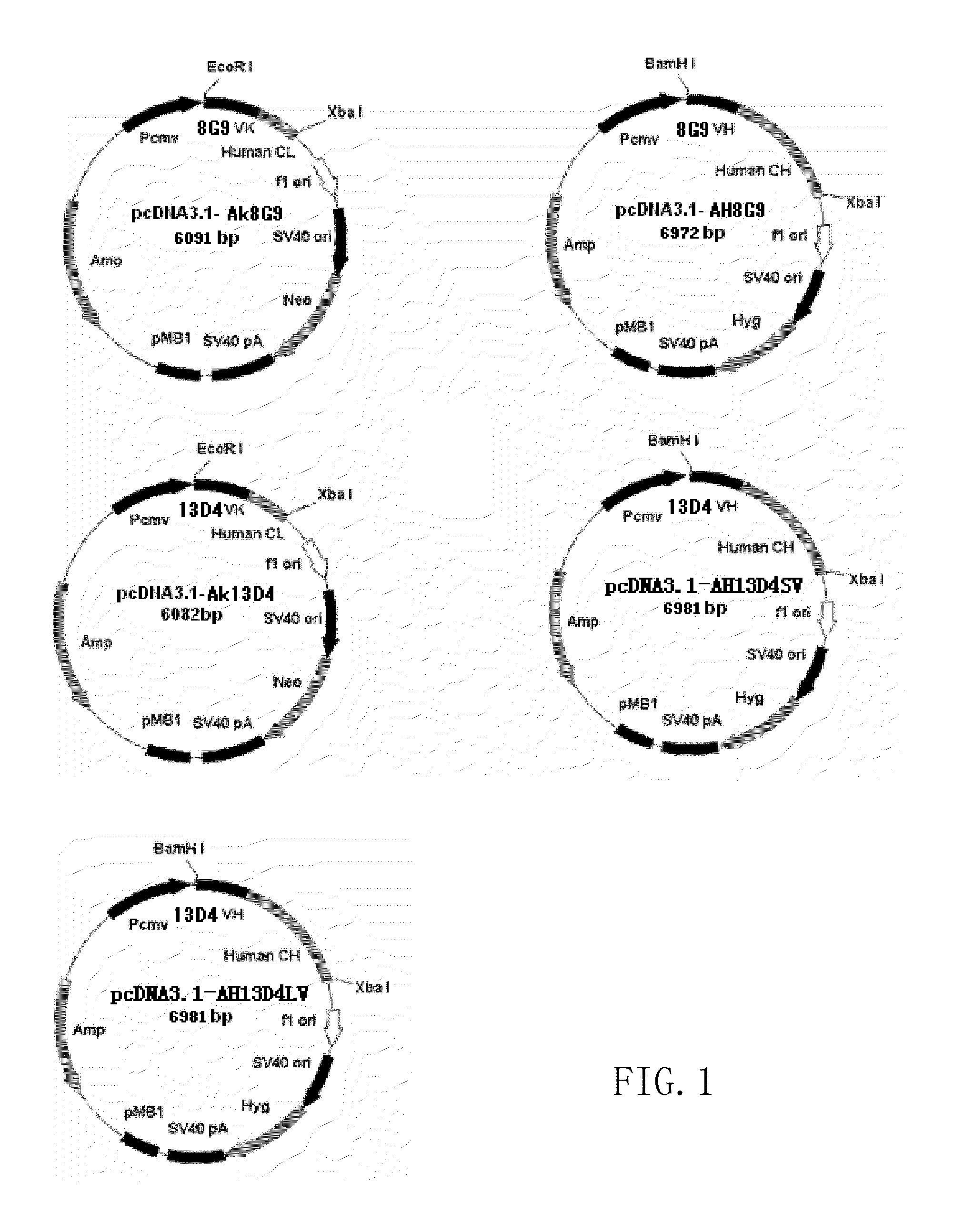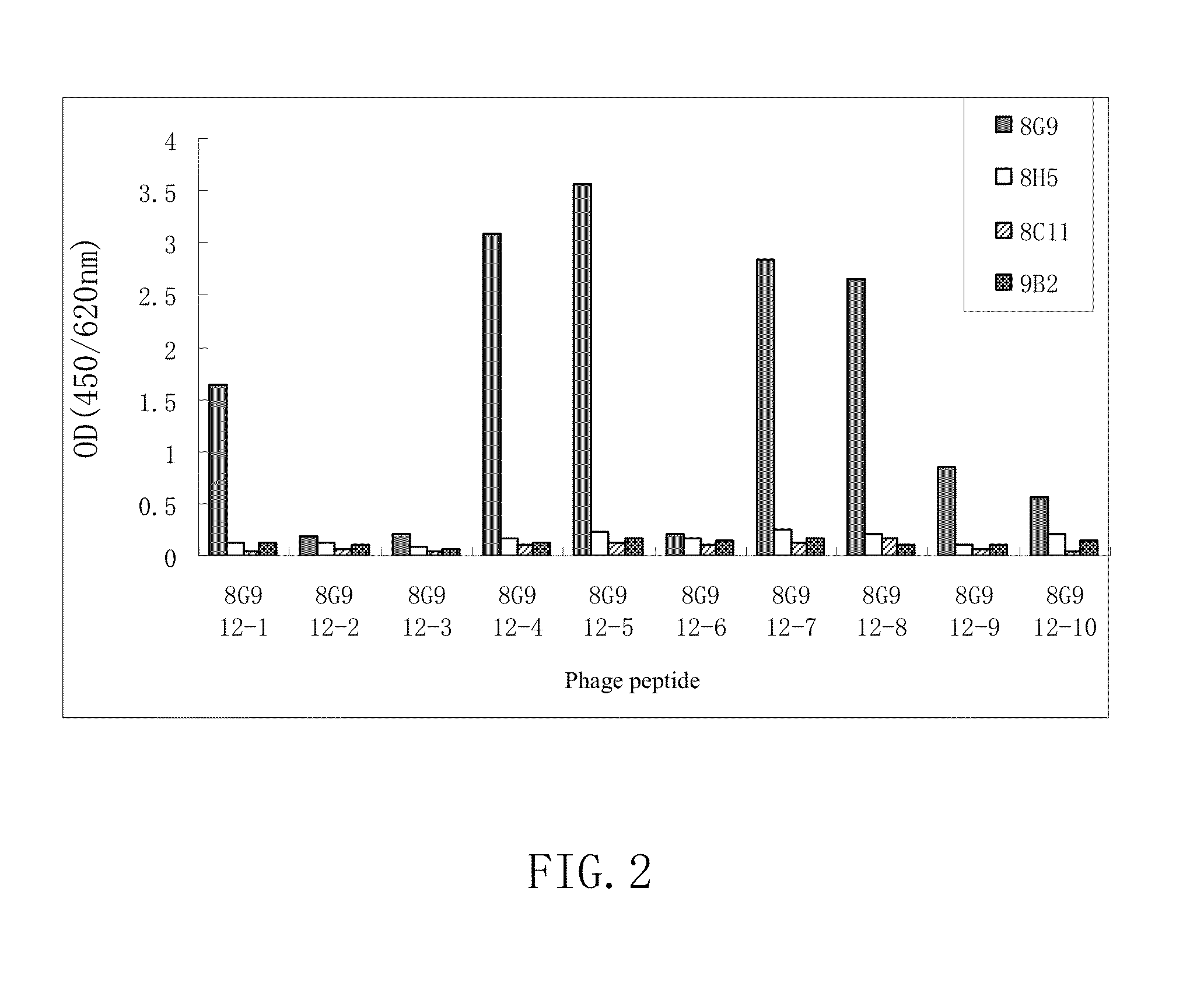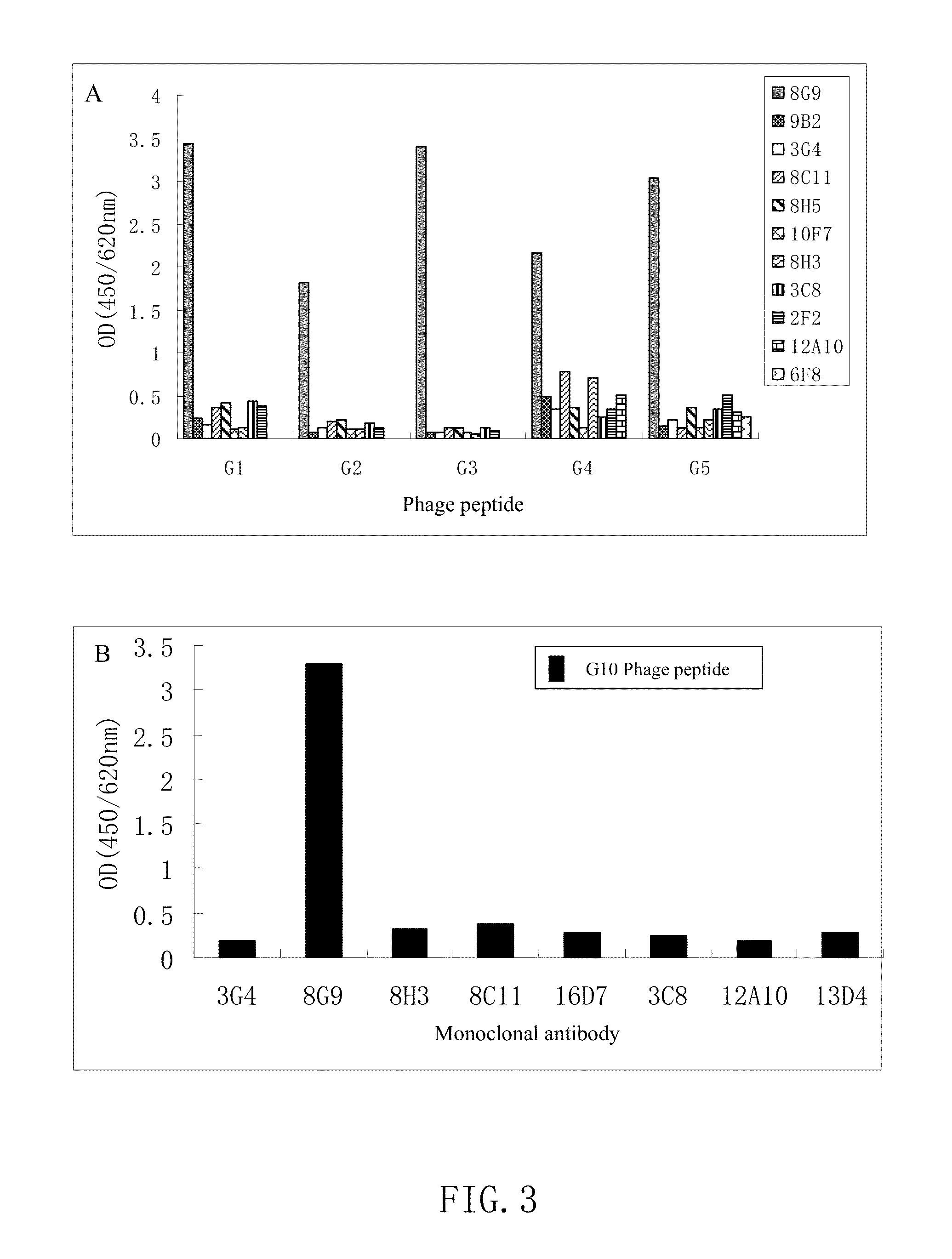Monoclonal antibodies binding to avian influenza virus subtype H5 haemagglutinin and uses thereof
a technology of avian influenza virus and monoclonal antibodies, which is applied in the field of monoclonal antibodies binding to avian influenza virus subtype h5 haemagglutinin, can solve the problems of high mortality of ducks and other waterfowl, the ability to cause the death of a large number of infected ducks, and the antigenecity of these viruses has been severely changed
- Summary
- Abstract
- Description
- Claims
- Application Information
AI Technical Summary
Problems solved by technology
Method used
Image
Examples
example 1
Preparation of Monoclonal Antibodies Against the HA Gene of Subtype H5 Avian Influenza Virus
[0224]Preparation of Antigen.
[0225]Fertilized chicken embryos of 9 days old were inoculated with virus strain Ck / HK / Yu22 / 02 (H5N1) (referred to as “Yu22”) for 2 days at 30° C. The chicken embryo supernatant was collected to obtain the amplified Yu22 virus. Live viruses were collected and inactivated with 0.03% formalin at 4° C. The HA of the inactivated virus was detected and the titer of the inactivated virus was measured (please refer to the guidelines of WHO for the specific methods for determining the HA titer and detecting hemagglutination inhibition (HI). We chose the virus strain HA=1024, which was provided by the Microbiology Department of Hong Kong University).
[0226]Mice.
[0227]6 weeks old female Balb / c mice were provided by the Experimental animal Center of School of Life Sciences, Xiamen University.
[0228]Production of Hybridoma.
[0229]We used standard in vivo immunization and PEG fus...
example 2
Assemble of the Detection Kit (Enzyme-Linked Immunosorbent Assay ELISA) for HA Antigen of Subtype H5 Influenza Virus
[0273]Double antibody sandwich assay was used in the kit to detect the HA antigen of the subtype H5 influenza virus. First, monoclonal antibodies against the HA gene of subtype H5 influenza virus were pre-attached to the surface of the polyethylene microwell plate in the kit. After the lytic H5-type influenza virus HA antigen was added to the microwell, the pre-coated monoclonal antibodies can capture it, and the enzyme-labeled monoclonal antibodies then added could also bind to it. The result was then determined via the enzyme-catalyzed chromogenic level of the substrate. When the specimen does not contain influenza virus antigens or is not the H5 influenza virus, the substrate will not change color. Specimens that can be tested include excreta, secretions from the mouth and nasal cavities, intact or lytic viruses of the chicken embryo culture, etc.
[0274]Preparation o...
example 3
Isolation of Genes of the Light Chain and Heavy Chain Variable Regions of the Monoclonal Antibodies
[0312]107 hybridoma cells were cultured in semi-adherent culture flask. The cells adhering to the flask walls were blown away from walls for suspension. The cells were transferred to a new 4 ml centrifuge tube, centrifuged at 1500 rpm for 3 min. The precipitated cells were collected and suspended again in 100 μl sterilized PBS (pH 7.45), and then transferred to another 1.5 ml centrifuge tube. 800 μl Trizol (Roche, Germany) was added to the tube, gently mixed, and incubated for 10 min. 200 μl chloroform was added and agitated well for 15 sec, incubated for 10 min, centrifuged at 12000 rpm at 4° C. for 15 min. Liquid of the top layer was transferred to a new 1.5 ml centrifuge tube. Equal volume of Isopropanol was added to the tube, mixed and incubated for 10 min. The mixture was centrifuged at 12000 rpm at 4° C. for 10 min. The supernatant was discarded and 600 μl 75% ethanol was added f...
PUM
| Property | Measurement | Unit |
|---|---|---|
| depth | aaaaa | aaaaa |
| width | aaaaa | aaaaa |
| width | aaaaa | aaaaa |
Abstract
Description
Claims
Application Information
 Login to View More
Login to View More - R&D
- Intellectual Property
- Life Sciences
- Materials
- Tech Scout
- Unparalleled Data Quality
- Higher Quality Content
- 60% Fewer Hallucinations
Browse by: Latest US Patents, China's latest patents, Technical Efficacy Thesaurus, Application Domain, Technology Topic, Popular Technical Reports.
© 2025 PatSnap. All rights reserved.Legal|Privacy policy|Modern Slavery Act Transparency Statement|Sitemap|About US| Contact US: help@patsnap.com



